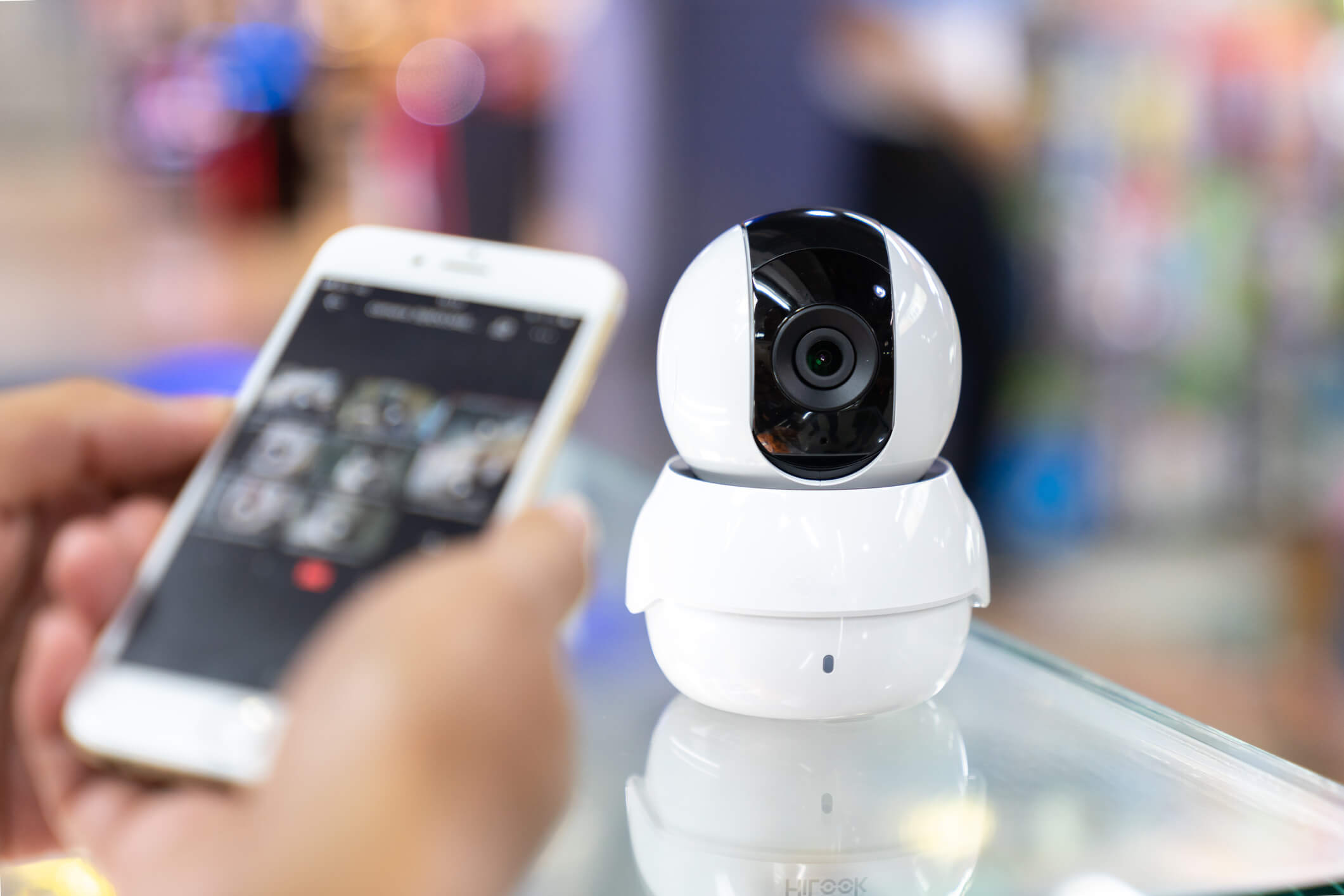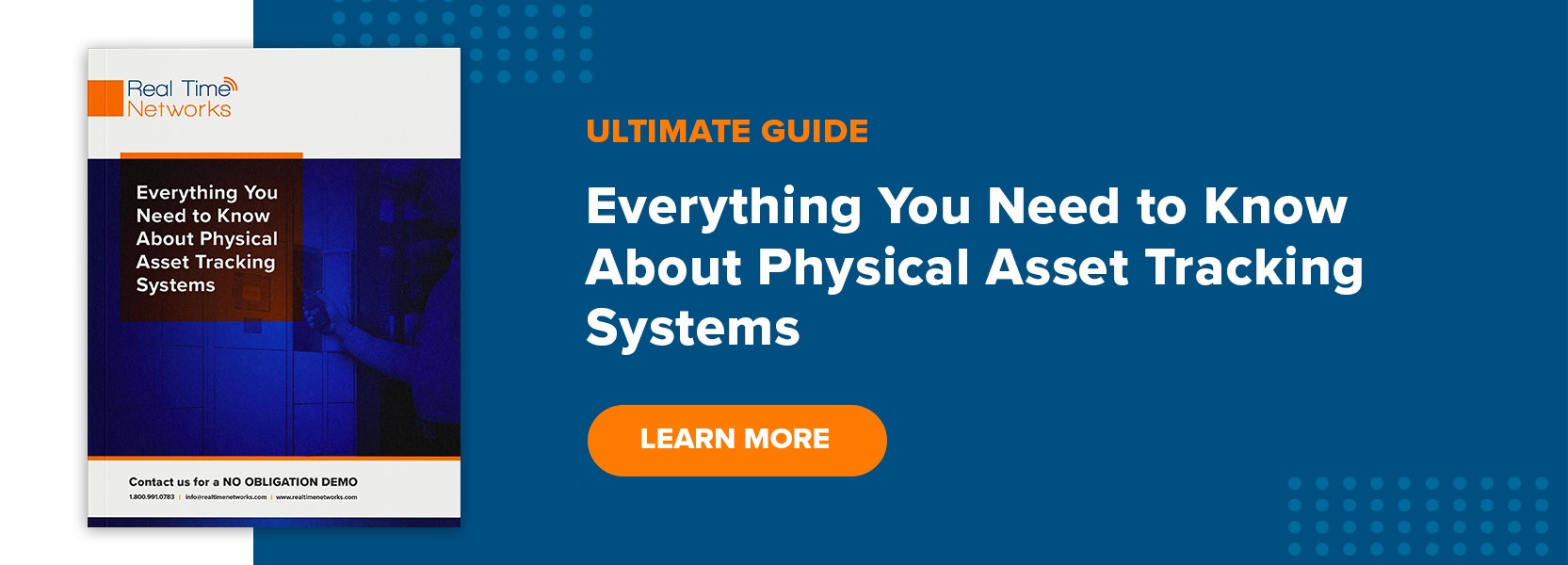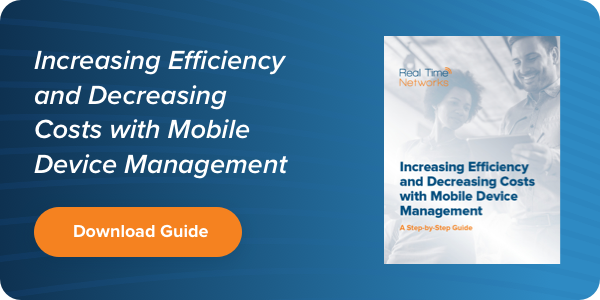By Jay Palter | December 4, 2020

As your business grows, the amount of technology, people, and equipment you need to manage grows with it. At a certain point, it is no longer cost-effective to do that management manually. More and more business sectors are turning to remote monitoring and control systems (M&C) as solutions for automating many different business operations.
M&C systems were first deployed in the industrial sector as a method for fine-tuning production processes that were too complex or detailed for human workers to effectively complete. Similar monitoring and control practices have since been adopted in other industries and widely within information technology.
Remote monitoring and control systems are increasingly important for organizing how people and technology need to function together in modern workplaces. Many businesses are now exploring how M&C systems can improve their management of physical assets, such as mobile electronics, equipment kits, and even physical keys.
What Exactly Is Remote Monitoring & Control?
Remote monitoring and control systems are designed to automate the control of large and complex processes. They are usually composed of a combination of digital and mechanical parts that together are able to capture, analyze, and act upon a higher volume of information faster than human staff could safely or effectively manage. One example of a remote monitoring and control system is a smart locker.
M&C systems are usually comprised of a combination of:
- Sensors
- Network connections
- Central computer systems
- Interfaces for human input
- Actuators, which are mechanical or electronic devices that take an action based on user or system feedback
These systems are important for complying with a number of different industrial standards, such as ISO 9001. They are used across industries for a variety of functions including industrial automation, IT network security, public transit controls, patient monitoring in healthcare, and physical asset management and distribution.
6 Reasons You Need a Remote Monitoring and Control System
In recent years, M&C experts have thought more and more about how remote automation can improve workflows even further afield, such as inventory management, logistics, and delivery. However, seeing how remote monitoring and control systems might be applied to your own operations can be hard if you don’t first see the underlying benefits. Here are the six greatest benefits we think businesses can expect to see by deploying M&C systems.
1. Improved Operational Efficiency
Electronic systems collect data significantly faster than human workers ever possibly could. Computer analysis is also significantly faster when connected by M&C systems, which can feed their data directly into central databases and reporting tools. The chance of human error is greatly reduced because data collection doesn’t depend on what staff see, hear, or correctly record.
2. Detailed Data Collection
Not only is information processed more efficiently in M&C systems, but you also get a higher volume of useful information, which allows you to make decisions earlier and more effectively. Sensors are built right into your infrastructure, which means they can collect data right at the source. Data collection can happen continuously and simultaneously in real time.
As an example, when using an asset management system, the status of multiple assets within an equipment kit can be verified simultaneously and near-instantaneously by built-in wireless sensors when a user signs out or returns a kit. If a component is missing or damaged, the system can notify relevant supervisors so they can respond immediately.
3. Cost Savings
Remote monitoring and control systems significantly reduce the labor necessary to carry out routine business operations. Staff can turn to more productive work until human expertise is needed. Supervisors don’t need to spend time generating and analyzing reports. Intelligent management software can do that automatically.
Purchasing M&C systems does require an up-front investment, but that investment can be spread out over a wide range of operations and over time. These systems can generate a significant ROI when they’re effectively implemented.
4. More Uptime
M&C systems can work around the clock. They don’t get tired, and they don’t need to leave at the end of a shift. They can handle spikes in demand faster and more reliably than a human operator could.
5. Faster Problem Response
When an M&C system identifies a problem, it responds instantly. Because the systems are networked, staff don’t even need to be on-site to assist with the resolution. They can address an M&C alert remotely, and in many cases, the system can manage the response on its own.
For example, a smart asset management system can notify a supervisor that a staff member has made multiple access requests for sensitive equipment they’re not authorized to use. Even off-site, the supervisor can tell the system to lock the equipment down, or completely lock the staff member out from an authorized smartphone.
6. Easier Change Management
Good change management requires good supporting data. With M&C systems, you will already receive faster, better insights than what manual data gathering enables. This makes it easier to identify areas of your business where you can implement change sooner and easier. For example, maintenance logs might reveal the need for better compliance of regulated assets you use. Or usage trends might reveal an opportunity to adjust how your organization manages equipment purchasing.
How to Get Started Developing a Remote Monitoring and Control System
Once you understand the value a remote monitoring and control system can bring to your business, the next natural question is usually how do you effectively implement one? Let us go over the essential things you will need to consider. For this example, we’ll consider how to implement M&C for asset management.
Determine What Needs to Be Monitored
Before designing actual infrastructure, you need to take a step back and, as an organization, decide which assets and which associated workflows you want to monitor. For example, you might want an automated transaction log that records late asset returns. You might also want a method for employees to report damage to equipment at sign out or return.
Determine Who Needs Access
Next, as an organization determine who will need to use the M&C system and in what capacities. Which staff members will need to sign out assets from it? Which supervisors and managers will need to monitor alerts and reports generated by the system?
Document How M&C Will Integrate with Other Workflows
M&C systems don’t exist in a bubble. They are intended to integrate with and streamline your wider business operations. You will need policies and training in place to ensure employees know how to interact with new systems to ensure that happens.
Will staff receive alerts through SMS or email? When and where will they go on-site when they receive a notification from an M&C system?
For example, an asset management system can prompt users to report technical problems when they return electronics. The system can send an email to technicians, trigger an IT ticket creation in an integrated IT service application, and prompt the user to deposit the device in a specially designated maintenance locker to wait for retrieval. Each staff member will need to know what is expected of them in order for that process to work smoothly.
Determine What New Technology You Need
You will likely need to purchase new technology to build your remote management and control system. However, many existing networked technologies have some number of M&C tools built in.
Often you can just reorganize how different existing tools, personnel, and business practices work together. Overall organization of your people and systems is often the key to implementing an effective M&C program. Consider whether equipment and asset management can be handled by remote monitoring and control methods using smart locker and key management systems.
What Are Smart Lockers?
These are secure storage and distribution cabinets with a sensor network built in attached to a central computer management system. They can adjust on the fly which assets are available for sign-out, flag assets in need of repair, and alert you to irregularities in sign-out patterns.
What Are Key Management Systems?
These are secure key storage systems with electronic access controls attached that manage who is able to retrieve different keys. They connect to central management IT systems that collect data, generate reports, and send necessary notifications.
Managing key access not only protects physical keys, but it better protects the sensitive equipment and facilities to which those keys provide access. Monitoring how, when, and where they’re used in your organization also turns physical keys into sources of useful business intelligence.
Remote Monitoring & Control Systems Make the Rest of Your Business Stronger
Remote management and control systems make work happen faster and safer. They automate audit trails, log staff and system actions, and notify staff to take action when human expertise is needed. M&C systems take care of tedious, dangerous work and allow your staff to focus on the tasks best handled by skilled human labor.
M&C systems don’t force you to reinvent your business. They make the way you do business today even better.
Subscribe to our blog

Jay Palter
Vice President of Marketing & Partnerships






